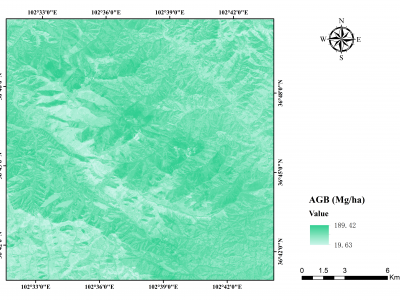Image Processing
To test the feasibility of the idea: Using the processed data of sentinel-2 and GlobeLand30 as the input image and ground truth of subspace clustering for land cover classification, a dataset named 'MSI_Gwadar' is created.
'MSI_Gwadar' is a multi-spectral remote sensing image of Gwadar (town and seaport, southwestern Pakistan) and its four regions of interest, which includes MATLAB data files and ground truth files of the study area and its four regions of interest.
- Categories:
 311 Views
311 Views
Video super-resolution (SR) has important real world applications such as enhancing viewing experiences of legacy low-resolution videos on high resolution display devices. However, there are no visual quality assessment (VQA) models specifically designed for evaluating SR videos while such models are crucially important both for advancing video SR algorithms and for viewing quality assurance. Therefore, we establish a super-resolution video quality assessment database (VSR-QAD) for implementing super-resolution video quality assessment.
- Categories:
 29 Views
29 Views
Video super-resolution (SR) has important real world applications such as enhancing viewing experiences of legacy low-resolution videos on high resolution display devices. However, there are no visual quality assessment (VQA) models specifically designed for evaluating SR videos while such models are crucially important both for advancing video SR algorithms and for viewing quality assurance. Therefore, we establish a super-resolution video quality assessment database (VSR-QAD) for implementing super-resolution video quality assessment.
- Categories:
 40 Views
40 ViewsThe results are based on the measurements conducted on small drones and a bionic bird using a 60 GHz millimeter wave radar, analyzing their micro-Doppler characteristics in both time and frequency domain. The results are presented in .pkl format. The more detailed description of the data and how the authors processed it will be updated soon.
- Categories:
 1604 Views
1604 Views
VSR-QAD-3Video super-resolution (SR) has important real world applications such as enhancing viewing experiences of legacy low-resolution videos on high resolution display devices. However, there are no visual quality assessment (VQA) models specifically designed for evaluating SR videos while such models are crucially important both for advancing video SR algorithms and for viewing quality assurance. Therefore, we establish a super-resolution video quality assessment database (VSR-QAD) for implementing super-resolution video quality assessment.
- Categories:
 45 Views
45 Views
The dataset is a validation dataset for low-light image enhancement and noise reduction tasks. The dataset contains triples of images: low-light images, target images and low-light enhanced images. We used this dataset to generate results for the manuscript "Adaptive Guided Upsampling for Low-light Image Enhancement" submitted to IEEE ACCESS for review. The dataset allows other researchers to work our material.
- Categories:
 66 Views
66 Views
Video super-resolution (SR) has important real world applications such as enhancing viewing experiences of legacy low-resolution videos on high resolution display devices. However, there are no visual quality assessment (VQA) models specifically designed for evaluating SR videos while such models are crucially important both for advancing video SR algorithms and for viewing quality assurance. Therefore, we establish a super-resolution video quality assessment database (VSR-QAD) for implementing super-resolution video quality assessment.
- Categories:
 41 Views
41 ViewsWe employed Hexacopter unmanned aerial vehicle (UAV) equipped with the SPECIM FX17E hyperspectral camera to implement ultra-low-altitude flight aerial photography missions with atmospheric correction processing. We collected three hyperspectral images and combined them into three data pairs, which exhibit varying degrees of spectral shift. Among them, a hyperspectral image including six types of ground objects was collected in Changsha at 4:00 pm on September 27, 2021, with sunny weather and a flight altitude of 30m, named CSSunny.
- Categories:
 152 Views
152 Views
The Nematode Detection Dataset is a comprehensive collection of 1,368 high-quality microscope images specifically curated for the advancement of agricultural pest management through machine learning. This dataset has been meticulously assembled to aid in the detection, identification, and analysis of four key types of nematodes that are critical to global agriculture: Meloidogyne (Root-knot nematodes), Globodera pallida (Potato cyst nematodes), Pratylenchus (Root-lesion nematodes), and Ditylenchus (Stem nematodes).
- Categories:
 143 Views
143 ViewsAboveground biomass (AGB) is a vital indicator for studying the carbon sink in forest ecosystems. Semi-arid forests harbor substantial carbon storage but received little attention as high spatial-temporal heterogeneity. This study assessed the performance of different data sources (annual monthly time-series radar: Sentinel-1 (S1), annual monthly time-series optical: Sentinel-2 (S2), and single-temporal airborne LiDAR) and seven prediction approaches to map AGB in the semi-arid forests at the border between Gansu and Qinghai provinces in China.
- Categories:
 131 Views
131 Views


